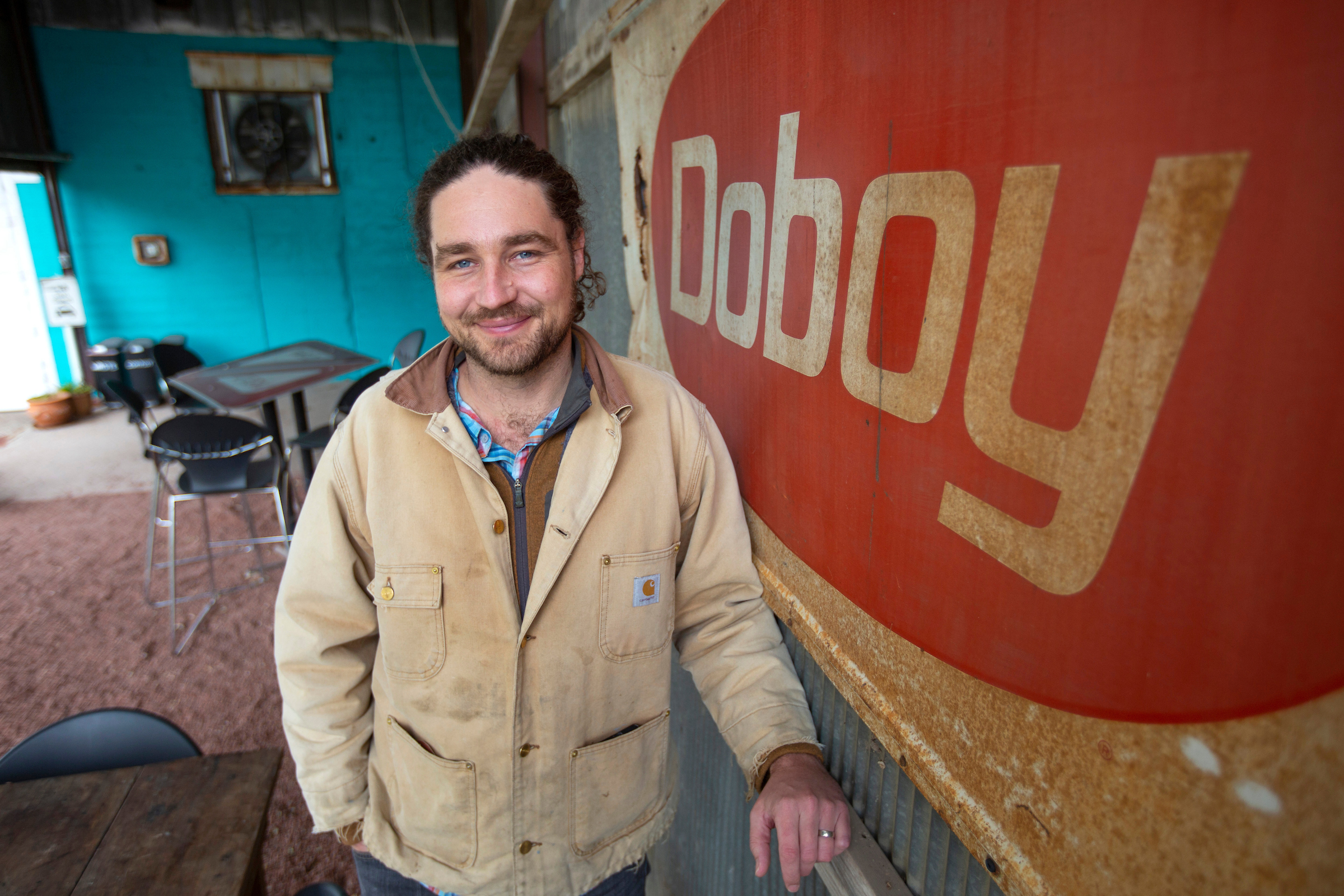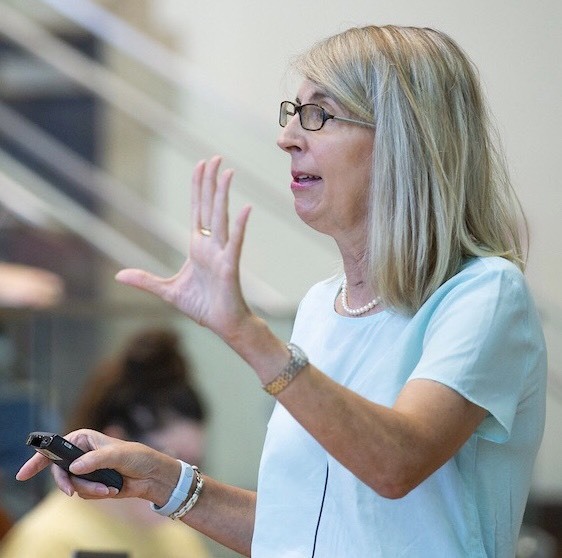This is the latest entry in a series of articles telling the personal stories of Iowa State University faculty and scientists whose work is changing the world for the better.
AMES, Iowa – How many people can say they got mono from a monk?
Austin Stewart is likely one of few, if not the only one. The assistant professor of art and visual culture and sustainable environments at Iowa State University has stories for days. Stewart splits his time between teaching in the College of Design and rehabilitating Reliable Street, the former Doboy feed mill and warehouse on Ames’ west side.
His passion for building and supporting community, and how art weaves through it all, has led him across America – including a pilgrimage 13 years ago.
The pilgrimage
After graduating from The School of the Art Institute of Chicago in 2000, Stewart started exploring something that had intrigued him for some time: Buddhism. He found Abhayagiri Buddhist Monastery in California, a monastery in the Thai Forest Tradition, and for four years, spent a month out of every year at the monastery.
He grew a friendship with one monk in particular, whom Stewart described as “strong-willed and quick to anger.” As they grew closer, Stewart says the monk revealed that he struggled with severe dyslexia, hence his difficulty communicating.
Stewart volunteered to serve as the monk’s steward for a pilgrimage. Because monks cannot touch money, cannot ask laypeople for medicine and can only carry food between dawn and mid-day, according to monastic order, a steward helps to ensure any donations are used appropriately and seeks out medical treatments as needed.
Monasteries in this tradition require long periods of solitude. Before the pilgrimage, Stewart stayed for three months.
“The first week was bliss. The first month was agony,” he said. “We did walking meditation every day, and every time I would see my car while walking I would think on repeat, ‘I could get in and leave and never come back.’”
The pair planned their pilgrimage from New Orleans to the Arrow River Forest Hermitage monastery in Thunder Bay, Ontario, Canada, roughly following U.S. Highway 61.
Since pilgrimages are uncommon in America, most people were unaware that Stewart and the monk were not allowed to ask for anything more than water.
“There was a lot of fear and uncertainty,” Stewart said. “Every day, we didn’t know what we were walking into, where we would sleep, what we would eat. And yet pretty much every day, we ran into somebody who would spontaneously give us food or money. It was really humbling to live in that constant state of unknown, being subject to other people’s generosity.”
Various strangers would track them down, food or money in tow. A Jehovah’s Witness who’d recently retired from truck-driving offered them a ride from the Mississippi Delta to Vicksburg. A doctor from Indiana had followed their blog, and gave them money for a train ride from Memphis to Indiana.
It was at that point, after hundreds of miles of walking, that they realized the monk’s recurring mononucleosis had come back, and he’d inadvertently given it to Stewart. They were too sick to continue the pilgrimage, and headed to a monastery in West Virginia to recuperate – though they did eventually make it to Thunder Bay.
The patience and thoughtfulness that Stewart found through Buddhism and this pilgrimage comes through in his work revamping Reliable Street today.

Austin Stewart is an assistant professor of art and visual culture and sustainable environments. He’s leading the charge rehabbing the Reliable Street property, a former mill on the northwest side of Ames. Photo by Christopher Gannon. Larger image.
Returning to Iowa
“I grew up in Des Moines with no intention of coming back after I turned 18,” Stewart said.
But after completing the pilgrimage and receiving his master of fine arts from The Ohio State University, Stewart returned home in 2013 to begin teaching in Iowa State’s College of Design.
He teaches digital media courses, including 3-D computer modeling, animation, video art and interactive art. Stewart’s own artwork is interactive and incorporates 3-D modeling and elements of sustainability, social justice and agriculture.
In 2015, a group of community members purchased the former Doboy feed mill and approached Stewart and his wife, Sharon, to join the effort. Her experience working in a coffee shop and his in a restaurant kitchen in Colorado inspired their vision for Reliable Street and the attached Lockwood Café. The café is “a synthesis of these two places,” he says, because of the way it runs, how customers are treated and the goal to be a gathering place for the community.
There are few services in and near this neighborhood, which has made Reliable Street’s amenities a welcome attraction for the community. So far, it includes a community garden, thrift store and the café, as well as a seating and play installation designed and built by architecture students last year. The next step is to finish the indoor portion of the café and the gallery space. They also have 8,000 square feet of empty space upstairs, with plans for its use still in the works.
Stewart says part of the programming will include workshops that incorporate art into activities that may interest a broader audience, such as knot-tying or making your own tire swings (a win-win to get rid of the tires from Reliable’s previous use as an auto repair shop).
“There’s this feeling that the arts only attract a certain demographic, that there’s a social boundary and people feel unwelcome and uncomfortable,” Stewart said. “We wanted to create more a space for the community that just happens to be centered around the arts.”



























